Abstract
When nonliving cells of Schizosaccharomyces pombe were subjected to the action of alternating uniform and nonuniform electric fields, two types of orientation were produced. The first one, with its longest axis parallel to the field lines, is similar to that obtained with living cells. The second, perpendicular to the direction of the field, is produced for relatively high frequencies and low conductivities; this probably takes place when the conductivities of the external and internal media (cell cytoplasm) become equal. A mixed cell population is produced in a discrete interval of the parameters used. Our results provide direct evidence that cell alignment does not depend on the physiological state of the cells.
Full text
PDF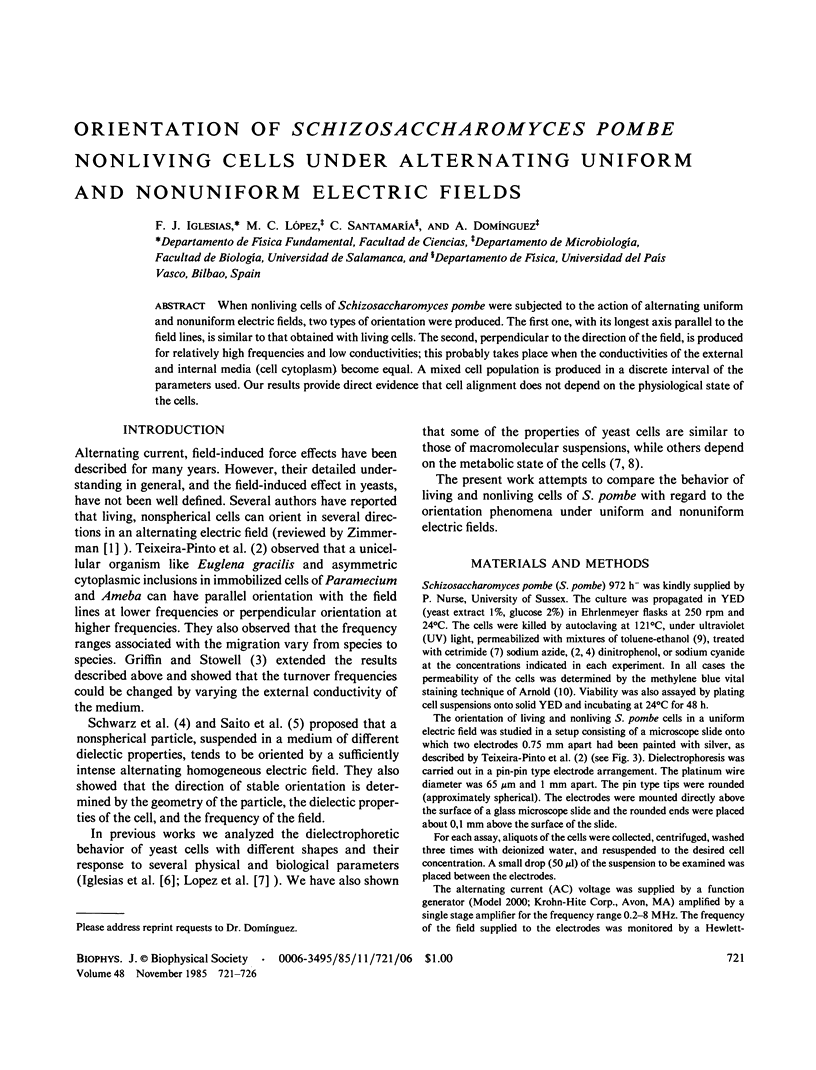
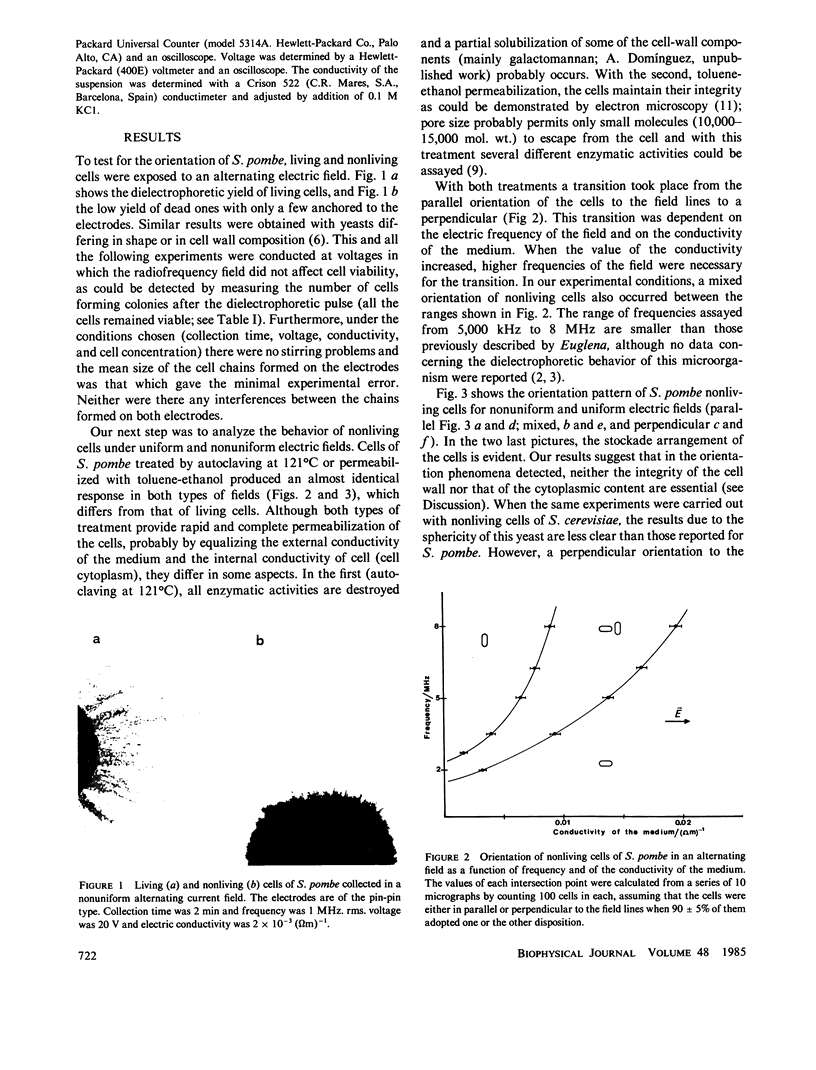
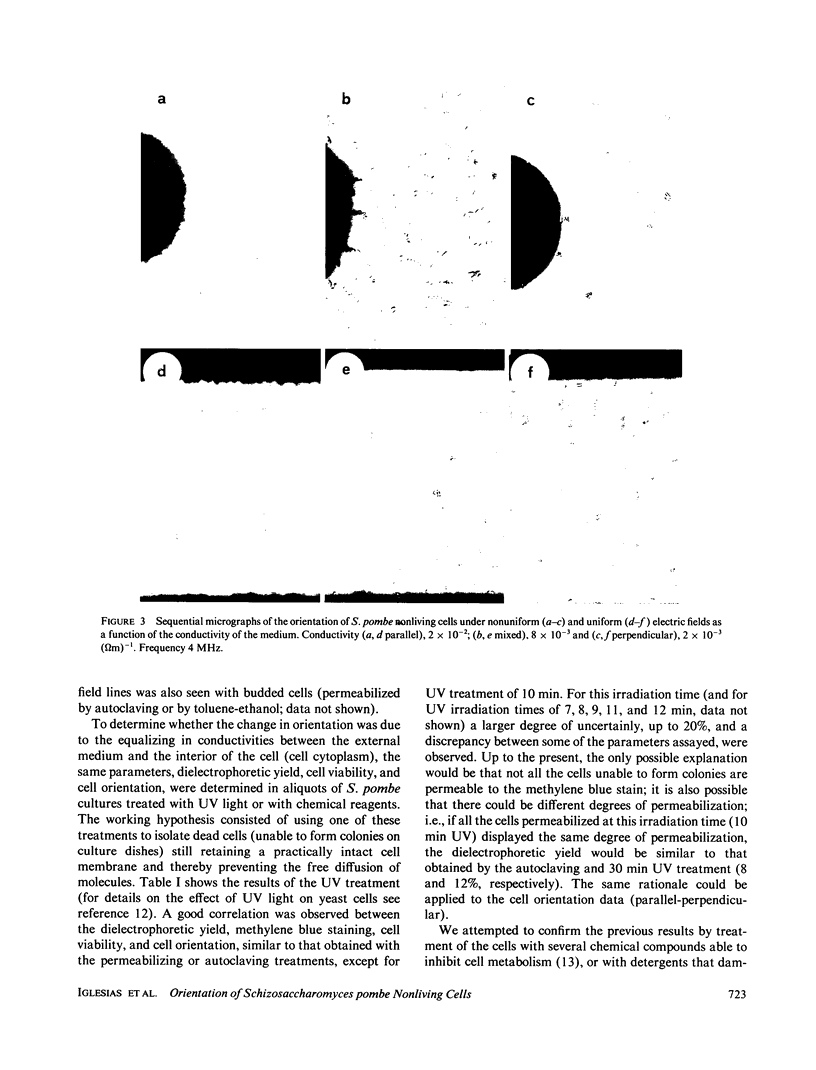
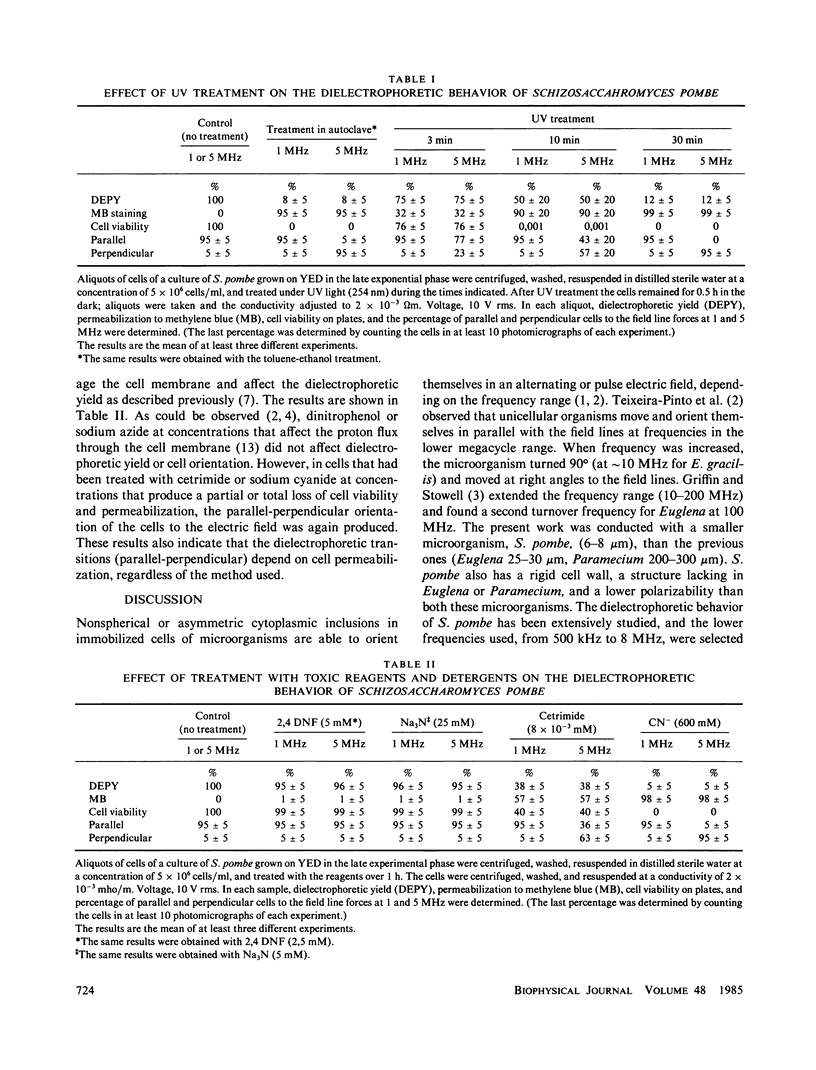
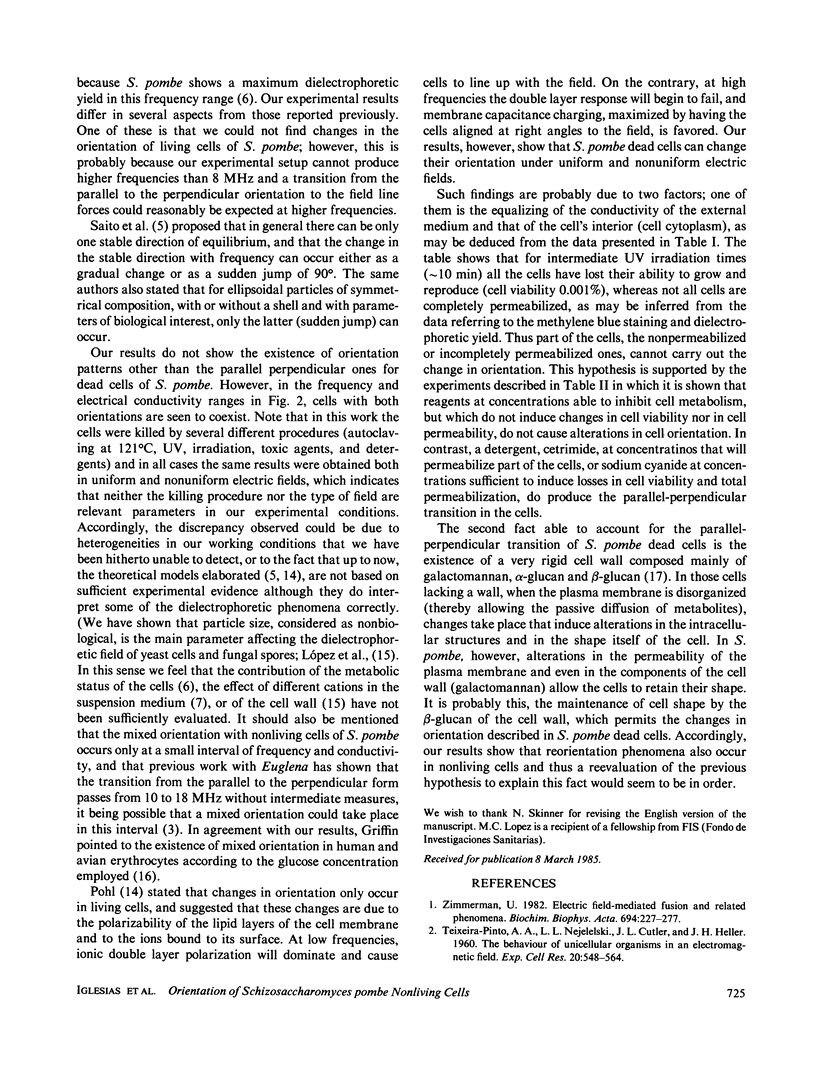
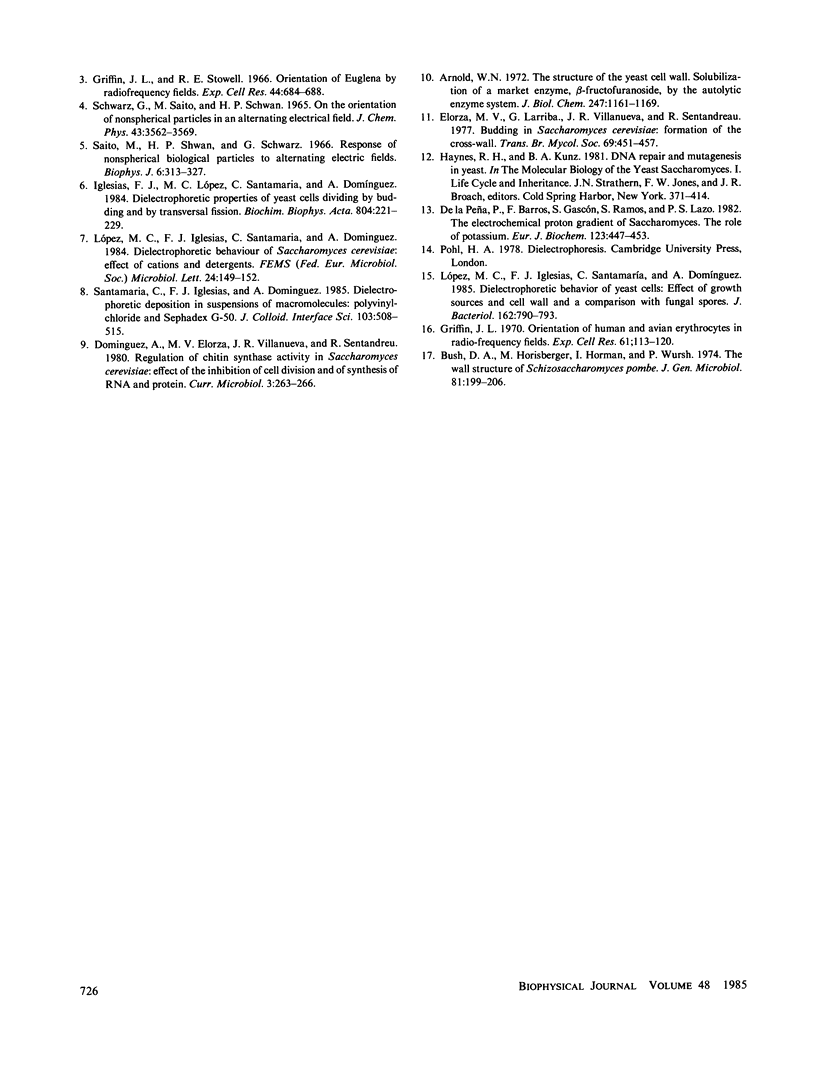
Images in this article
Selected References
These references are in PubMed. This may not be the complete list of references from this article.
- Arnold W. N. The structure of the yeast cell wall. Solubilization of a marker enzyme, -fructofuranosidase, by the autolytic enzyme system. J Biol Chem. 1972 Feb 25;247(4):1161–1169. [PubMed] [Google Scholar]
- Bush D. A., Horisberger M., Horman I., Wursch P. The wall structure of Schizosaccharomyces pombe. J Gen Microbiol. 1974 Mar;81(1):199–206. doi: 10.1099/00221287-81-1-199. [DOI] [PubMed] [Google Scholar]
- Griffin J. L. Orientation of human and avian erythrocytes in radio-frequency fields. Exp Cell Res. 1970 Jul;61(1):113–120. doi: 10.1016/0014-4827(70)90263-6. [DOI] [PubMed] [Google Scholar]
- Griffin J. L., Stowell R. E. Orientation of Euglena by radio-frequency fields. Exp Cell Res. 1966 Nov-Dec;44(2):684–688. doi: 10.1016/0014-4827(66)90487-3. [DOI] [PubMed] [Google Scholar]
- Iglesias F. J., Lopez M. C., Santamaría C., Domínguez A. Dielectrophoretic properties of yeast cells dividing by budding and by transversal fission. Biochim Biophys Acta. 1984 Jun 19;804(2):221–229. doi: 10.1016/0167-4889(84)90153-8. [DOI] [PubMed] [Google Scholar]
- López M. C., Iglesias F. J., Santamaría C., Domínguez A. Dielectrophoretic behavior of yeast cells: effect of growth sources and cell wall and a comparison with fungal spores. J Bacteriol. 1985 May;162(2):790–793. doi: 10.1128/jb.162.2.790-793.1985. [DOI] [PMC free article] [PubMed] [Google Scholar]
- Saito M., Schwan H. P., Schwarz G. Response of nonspherical biological particles to alternating electric fields. Biophys J. 1966 May;6(3):313–327. doi: 10.1016/S0006-3495(66)86659-6. [DOI] [PMC free article] [PubMed] [Google Scholar]
- Zimmermann U. Electric field-mediated fusion and related electrical phenomena. Biochim Biophys Acta. 1982 Nov 30;694(3):227–277. doi: 10.1016/0304-4157(82)90007-7. [DOI] [PubMed] [Google Scholar]
- de la Peña P., Barros F., Gascón S., Ramos S., Lazo P. S. The electrochemical proton gradient of Saccharomyces. The role of potassium. Eur J Biochem. 1982 Apr 1;123(2):447–453. doi: 10.1111/j.1432-1033.1982.tb19788.x. [DOI] [PubMed] [Google Scholar]




